Abstract
Factor B (a component of the alternative pathway of complement) is believed to contain the proteolytic site of the complex enzymes C3 convertase (C3bB) and C5 convertase (C3bnB). Conflicting results have been obtained in regard to the inactivation of these enzymes by diisopropyl phosphorofluoridate but it has been suggested that activated Factor B (Factor B) is a serine protease with the active site in Bb, a COOH-terminal fragment of approximately 60,000 molecular weight. Partial amino acid sequence studies of Bb derived from human Factor B have shown that the NH2-terminal 40 residues have no homology with NH2-terminal sequences of other serine proteases. However, positioning of a further 170 residues out of approximately 290 residues in two continuous CNBr fragments from the COOH terminus has shown that there is a strong homology of sequence in this section. The active site residues histidine, aspartic acid, and serine all are present in positions corresponding with those of typical serine proteases. It is suggested that Factor B is a novel type of serine protease with a catalytic chain of molecular weight twice that of proteases previously studied and probably with a different activation mechanism.
Full text
PDF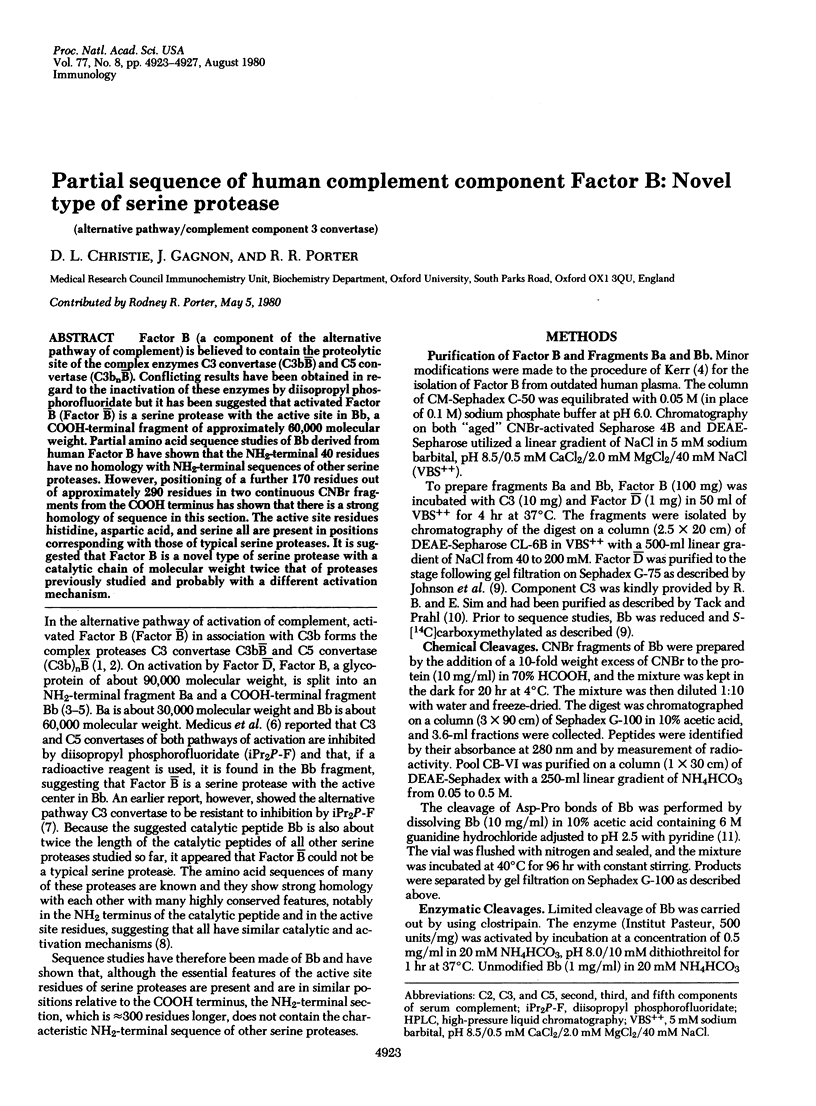
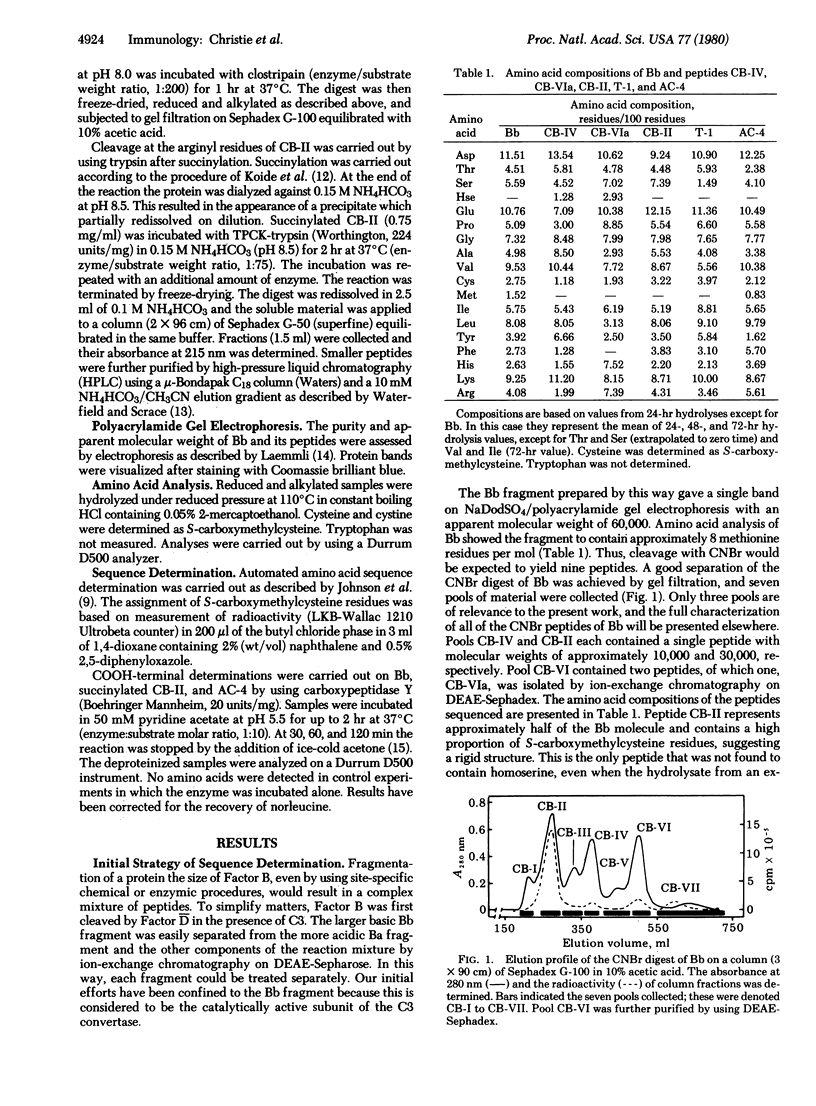
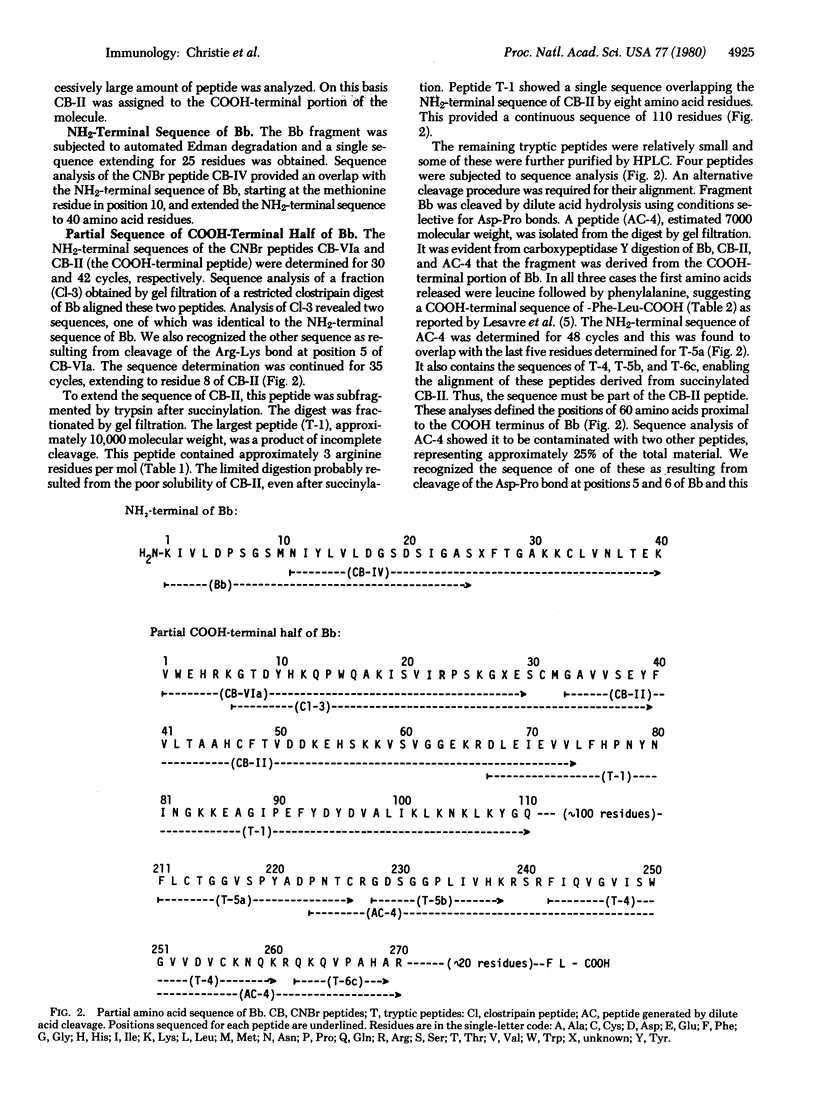
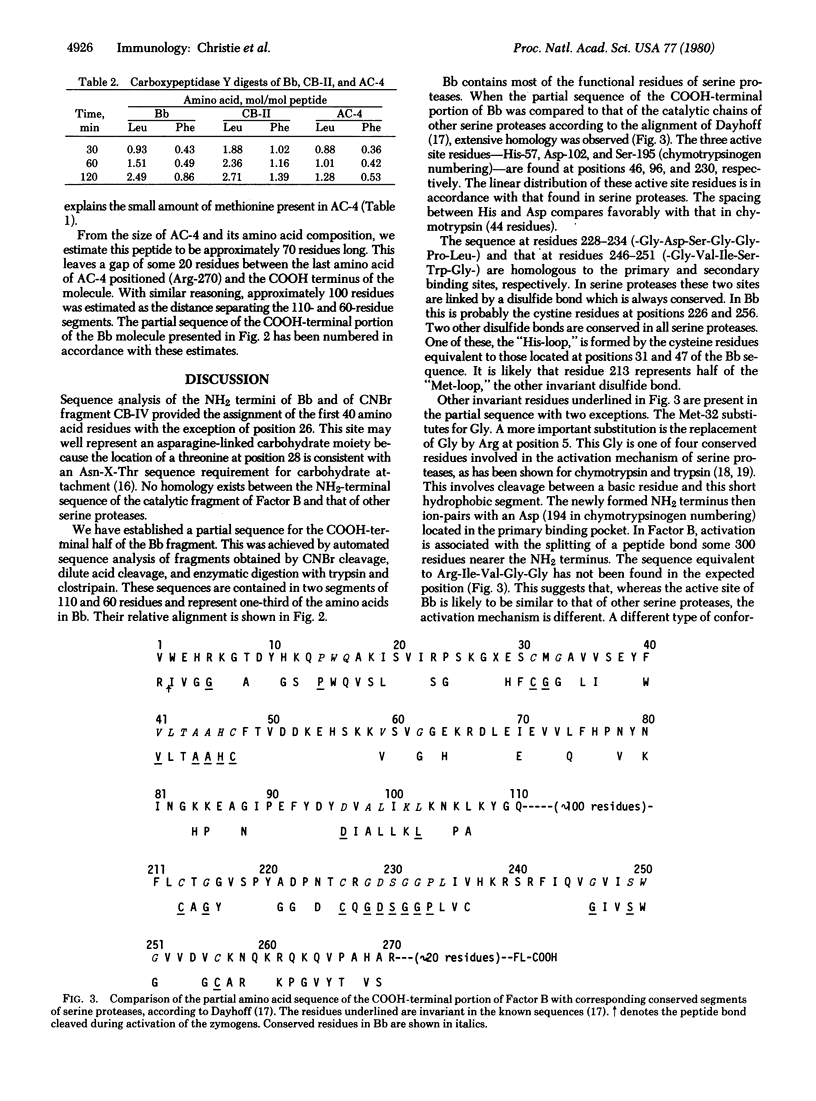
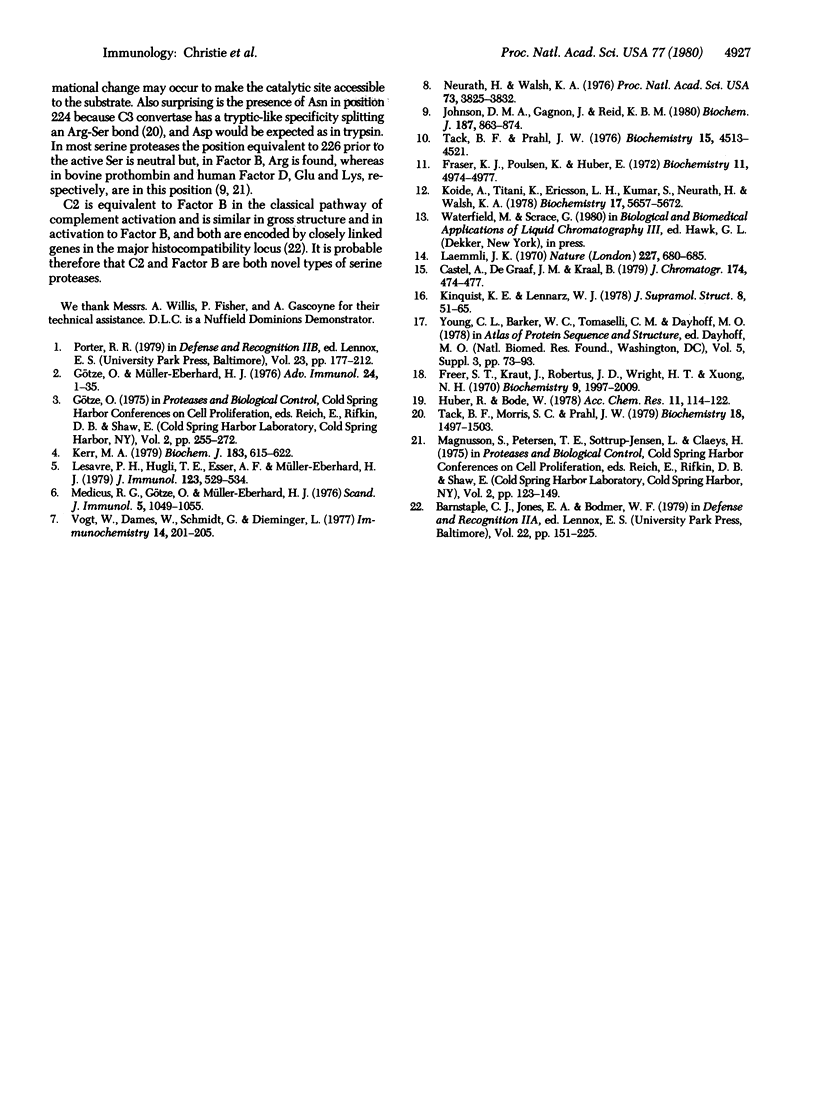
Selected References
These references are in PubMed. This may not be the complete list of references from this article.
- Fraser K. J., Pulsen K., Haber E. Specific cleavage between variable and constant domains of rabbit antibody light chains by dilute acid hydrolysis. Biochemistry. 1972 Dec 19;11(26):4974–4977. doi: 10.1021/bi00776a016. [DOI] [PubMed] [Google Scholar]
- Freer S. T., Kraut J., Robertus J. D., Wright H. T., Xuong N. H. Chymotrypsinogen: 2.5-angstrom crystal structure, comparison with alpha-chymotrypsin, and implications for zymogen activation. Biochemistry. 1970 Apr 28;9(9):1997–2009. doi: 10.1021/bi00811a022. [DOI] [PubMed] [Google Scholar]
- Götze O., Müller-Eberhard H. J. The alternative pathway of complement activation. Adv Immunol. 1976;24:1–35. doi: 10.1016/s0065-2776(08)60328-4. [DOI] [PubMed] [Google Scholar]
- Johnson D. M., Gagnon J., Reid K. B. Factor D of the alternative pathway of human complement. Purification, alignment and N-terminal amino acid sequences of the major cyanogen bromide fragments, and localization of the serine residue at the active site. Biochem J. 1980 Jun 1;187(3):863–874. doi: 10.1042/bj1870863. [DOI] [PMC free article] [PubMed] [Google Scholar]
- Kerr M. A. Limited proteolysis of complement components C2 and factor B. Structural analogy and limited sequence homology. Biochem J. 1979 Dec 1;183(3):615–622. doi: 10.1042/bj1830615. [DOI] [PMC free article] [PubMed] [Google Scholar]
- Koide A., Titani K., Ericsson L. H., Kumar S., Neurath H., Walsh K. A. Sequence of the amino-terminal 349 residues of rabbit muscle glycogen phosphorylase including the sites of covalent and allosteric control. Biochemistry. 1978 Dec 26;17(26):5657–5672. doi: 10.1021/bi00619a012. [DOI] [PubMed] [Google Scholar]
- Kronquist K. E., Lennarz W. J. Enzymatic conversion of proteins to glycoproteins by lipid-linked saccharides: a study of potential exogenous acceptor proteins. J Supramol Struct. 1978;8(1):51–65. doi: 10.1002/jss.400080105. [DOI] [PubMed] [Google Scholar]
- Laemmli U. K. Cleavage of structural proteins during the assembly of the head of bacteriophage T4. Nature. 1970 Aug 15;227(5259):680–685. doi: 10.1038/227680a0. [DOI] [PubMed] [Google Scholar]
- Lesavre P. H., Hugli T. E., Esser A. F., Müller-Eberhard H. J. The alternative pathway C3/C5 convertase: chemical basis of factor B activation. J Immunol. 1979 Aug;123(2):529–534. [PubMed] [Google Scholar]
- Medicus R. G., Götze O., Müller-Eberhard H. J. The serine protease nature of the C3 and C5 convertases of the classical and alternative complement pathways. Scand J Immunol. 1976;5(9):1049–1055. doi: 10.1111/j.1365-3083.1976.tb03056.x. [DOI] [PubMed] [Google Scholar]
- Neurath H., Walsh K. A. Role of proteolytic enzymes in biological regulation (a review). Proc Natl Acad Sci U S A. 1976 Nov;73(11):3825–3832. doi: 10.1073/pnas.73.11.3825. [DOI] [PMC free article] [PubMed] [Google Scholar]
- Tack B. D., Prahl J. W. Third component of human complement: purification from plasma and physicochemical characterization. Biochemistry. 1976 Oct 5;15(20):4513–4521. doi: 10.1021/bi00665a028. [DOI] [PubMed] [Google Scholar]
- Tack B. F., Morris S. C., Prahl J. W. Third component of human complement: structural analysis of the polypeptide chains of C3 and C3b. Biochemistry. 1979 Apr 17;18(8):1497–1503. doi: 10.1021/bi00575a017. [DOI] [PubMed] [Google Scholar]
- Vogt W., Dames W., Schmidt G., Dieminger L. Complement activation by the properdin system: formation of a stoichiometric. C3 cleaving complex of properdin factor B with C36. Immunochemistry. 1977 Mar;14(3):201–205. doi: 10.1016/0019-2791(77)90195-1. [DOI] [PubMed] [Google Scholar]


